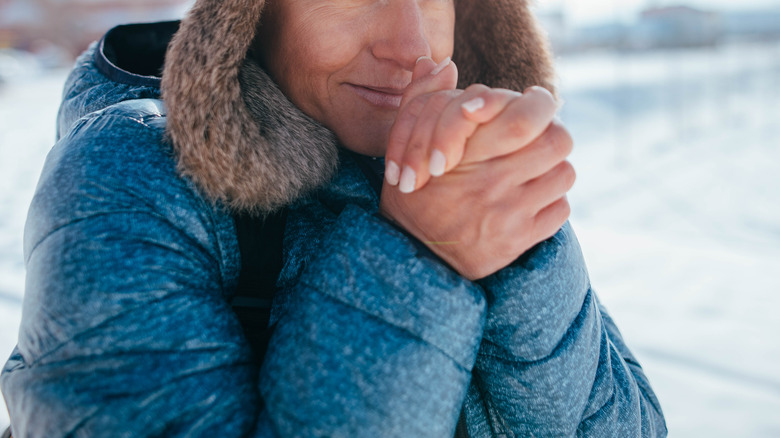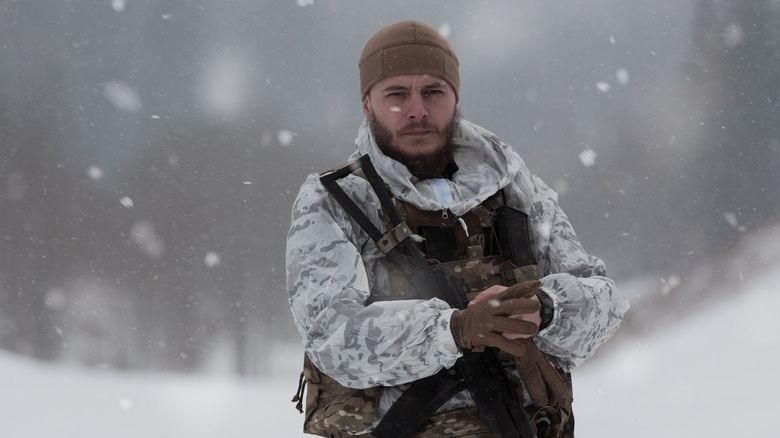How This Army Technology Could Keep Hands Warm Without Gloves
We may receive a commission on purchases made from links.
Cold hands can lead to all kinds of problems. If your digits are just a little chilly, your dexterity may suffer. On the other end of the scale, conditions like frostbite can be painful at best, and ensure you haven't got any digits to freeze off in the future at worst. There is a perfectly serviceable solution to cold hands, and it has existed for thousands of years in the form of gloves or mittens. However, hand coverings like these come with their own set of problems.
Gloves, especially thick gloves, make delicate tasks difficult to perform, drastically reduce your ability to feel things, and when it comes to military applications, make it difficult to reload a magazine or fit your finger around a trigger. That is one of the reasons the U.S. Military is looking for a glove-free way to stop people's hands getting too cold. A successful test could affect everyone from soldiers on the front line to linemen maintaining electricity grids.
The military has tested systems like this, and one looks very promising. The tests involved eight subjects, six men and two women. They were layered in winter clothing, but left with bare hands before being asked to perform tasks over two hours in a room chilled to 32 degrees Fahrenheit.
Their strength and dexterity during the tasks was scored, and the subjects were asked to rate their level of discomfort. A control test was done to establish the experiment's parameters, and things got interesting.
One glove-free solution shows some promise
One potential way to keep a person's hands warm while glove-free makes sense. Blood serves a number of functions, one of which is distributing heat throughout our body. If your core is warm, either due to layering or exercise, then the chances are your extremities will be warmer too.
Your body naturally forces blood towards your skin in an attempt to get rid of excess heat. As part of the experiment, subjects were fitted with electrical "forearm warmers." The warmers use around 41 watts of electricity, which is around the same as a fairly dim incandescent lightbulb. Arm warmers like this are capable of being powered by a small battery bank, and even simple versions can be purchased from websites like Amazon for more mundane tasks.
More robust limb warming solutions have shown promise, but supplying the power they need poses a challenge. However, a patent for a possible solution has been filed by the Medical Support Systems and Evacuation Project Management Office in the U.S. Army Medical Materiel Development Agency.
The results of the test were promising, with the hand temperature of individuals rising from 50 to 55 degrees Fahrenheit when the arm warmers were fitted. More importantly, that five degree increase in temperature led to a 50% boost in dexterity. Your joints contain synovial fluid, which is heavily affected by cold. The heat boost seems to help this fluid stay in its ideal range.
Despite the early success, research takes a while. Officials expect field testing of the gloveless solution to be a few years away.
Another method doesn't really work
The forearms weren't the only body part that was warmed to see if it had an effect on other extremities. Researchers also decided to try warming the subject's faces. This phase of the experiment was based on the fact a blast of cold to the face tends to constrict both blood vessels in the face, along with those in the hands and feet.
Researchers were aiming to find out if the opposite was true, and application of heat to the face would expand blood vessels in other areas of the body — in turn allowing more blood to flow into those areas.
Sadly for the researchers, this line of thought was a bit of a dead end. Heating the face did not seem to improve blood flow to the subjects' extremities. However, the face side of the experiment wasn't a total waste of time. While the addition of goggles and a balaclava to the subjects may not have made blood vessels in the hands expand, it did have a correlation with helping stave off overall heat loss in the fingers and hands.


